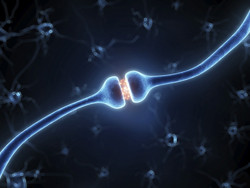At the junction to brain disorder therapy
The synapse, the junction between nerve cells or neurons, is responsible for the transmission of chemical transmitters or electrical signals. An incredibly complex structure, around 2 000 proteins make up this organelle. Funded by the EU, the SYNSYS(opens in new window) (Synaptic systems: Dissecting brain function in health and disease) project specifically investigated the glutamatergic synapse. Furthermore, the team generated models describing the main functional features of the synaptic system. Appropriate model systems were also used to identify genes that can be targeted to develop therapies for human brain diseases. The scientists have developed a thorough description of the synaptic proteome, its complete set of proteins. The information has been linked to choice of drug targets. The SynSysNet database gives details of all genes, their proteins when expressed, protein interactions (interactome), neurological diseases and drugs relevant to certain pathways. Users can construct their own 'Interactive Network' if they know the protein ID and the drug they are interested in. SYNSYS was successful in implementing a systems biology analysis. The scaling of protein identity to the modelling of the interactome and finally arriving at function was the result of interlab collaboration and synergy through multiple workshops. The extensive proteome data is poised for testing of proteins in the larger groups recruited for human genetics. Already, SYNSYS has contributed to determining the role of synaptic genes in schizophrenia, with the results featuring in a high-impact paper. Overall, there have been more than 200 papers published, 31 % of which are classed as 'high impact'. Other communication mediums include press releases, blogs and interviews. Strength of the nerve signal, or synaptic plasticity, is a crucial factor in many diseases and is controlled by many variables, including vesicle number availability and protein-protein interaction. Pre- and postsynaptic plasticity are thought to be major determinants in information processing. Alterations in signalling are believed to be central to learning and memory processes in the brain. The impact of genes or environmental stimuli on plasticity causes disease. The SYNSYS systems biology approach combining modelling tools and experimental neuroscience promises to unravel the mechanisms in play. The next step will be further development of targeted therapies.







